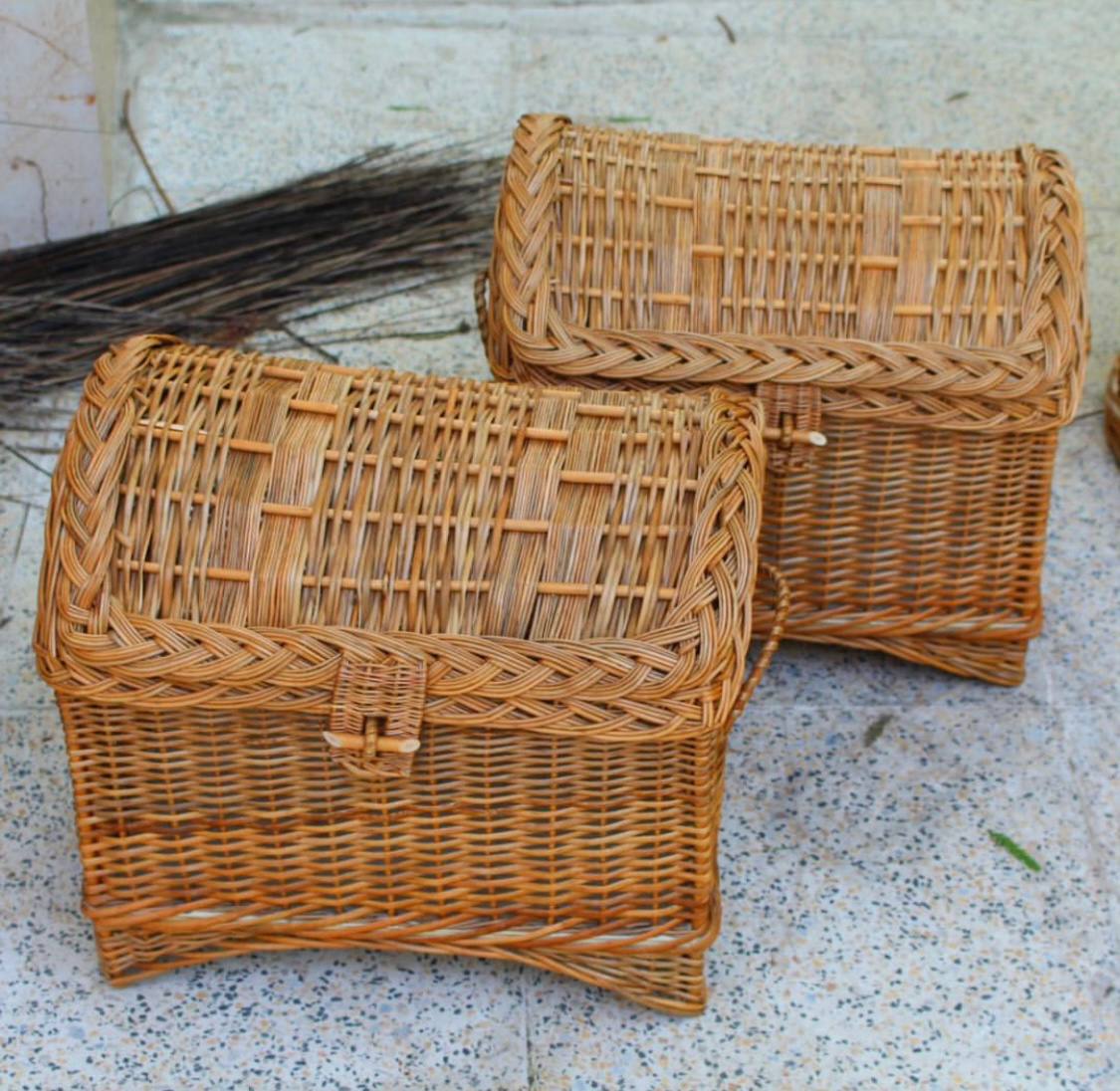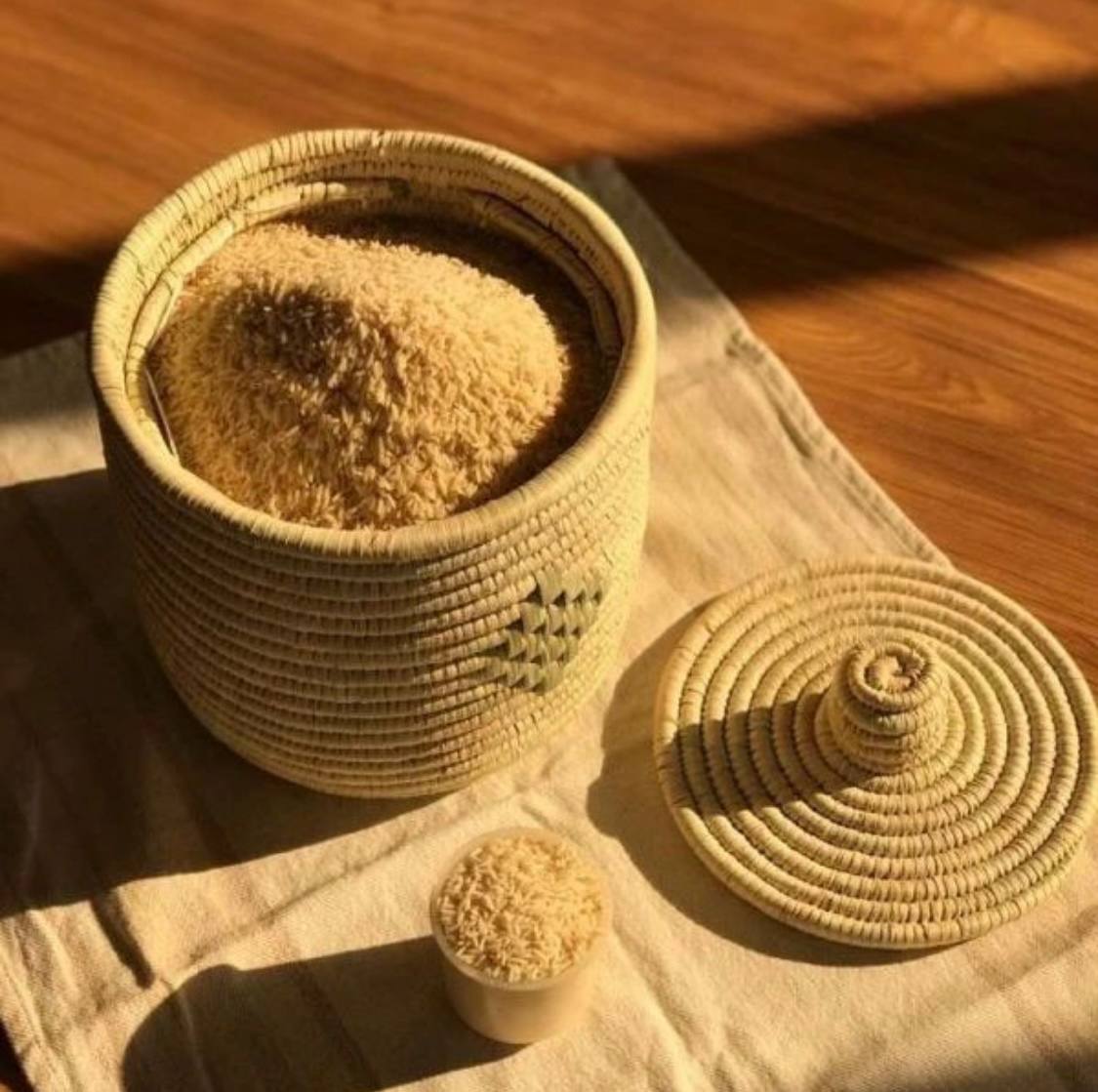History of mat weaving art in Iran
The art of mat weaving in Iran has a long and rich history, dating back thousands of years. This traditional craft has been an integral part of Iranian culture and daily life, serving both functional and decorative purposes. Here is an overview of the history of mat weaving art in Iran: History of mat weaving art in Iran Classification of works produced in the art of mat weaving in Iran : The art of mat weaving in Iran handicrafts .

Ancient Origins: Mat weaving in Iran can be traced back to ancient times. Archaeological evidence suggests that Iranians were weaving mats as far back as the 5th millennium BCE. These early mats were likely made from natural materials such as reeds, rushes, and palm leaves.
Materials and Techniques: Over the centuries, Iranian mat weavers have utilized a wide range of materials, depending on their availability in different regions. Common materials include palm leaves, reeds, rushes, straw, and even wool. The choice of material often depended on the climate and resources of the particular area.Mat weaving techniques also evolved over time. Iranian weavers used various methods, including twining, braiding, and coiling, to create different types of mats with distinct patterns and designs. persian rug
Regional Variations: Iran\’s diverse geography and climate have given rise to regional variations in mat weaving. Different provinces and communities developed their unique styles and patterns. For example: History of mat weaving art in Iran Classification of works produced in the art of mat weaving in Iran : The art of mat weaving in Iran
In southern Iran, where palm trees are abundant, palm leaf mats are common.
In northern regions, where reeds grow along the Caspian Sea, reed mats are prevalent.
In desert regions, straw mats and camel hair mats are woven to provide insulation against extreme temperatures.

Cultural Significance: Mats in Iran have served various purposes beyond their functional roles. They have been used as prayer rugs, floor coverings, wall decorations, and even as seating mats in traditional Iranian homes. Mats also hold cultural and symbolic significance, often featuring intricate designs and patterns that reflect the local culture and traditions. backgammon
Contemporary Revival: While the traditional art of mat weaving has a long history, it has faced challenges in the modern era due to changing lifestyles and the availability of synthetic materials. However, there has been a renewed interest in preserving and promoting this ancient craft. Artisans and organizations are working to revive traditional weaving techniques and promote the use of natural materials.

Export and International Recognition: Iranian mats, particularly those made in famous weaving centers like Yazd and Isfahan, have gained international recognition for their quality and craftsmanship. These mats are often exported and sought after by collectors and enthusiasts worldwide. History of mat weaving art in Iran Classification of works produced in the art of mat weaving in Iran : The art of mat weaving in Iran (.Iranian carpet )
In conclusion, the art of mat weaving in Iran has a deep-rooted history, reflecting the country\’s diverse culture and natural resources. While it has faced challenges in the modern age, efforts to preserve and revive this traditional craft continue, ensuring that it remains an important part of Iran’s cultural heritage.
Classification of works produced in the art of mat weaving in Iran:
Iran has a rich tradition of handicrafts, and weaving mats is one of the many crafts practiced in the country. Persian mats, also known as “klims” or “kilims,” are a type of flat-woven textile that serves both practical and decorative purposes. These mats are created by skilled artisans using traditional techniques and often feature intricate patterns and vibrant colors. Here’s some information about handicraft weaving mats in Iran: History of mat weaving art in Iran Classification of works produced in the art of mat weaving in Iran : The art of mat weaving in Iran (machine carpets)

Historical Significance: Weaving has a long history in Iran, dating back thousands of years. Persian rugs and mats are renowned worldwide for their quality and craftsmanship. They are often considered a form of art and a symbol of Persian culture.
Materials: Persian mats are typically woven using natural materials such as wool, cotton, or a combination of both. Wool is the most common material used due to its durability and ability to hold vibrant dyes.
Designs and Patterns: Persian mats are known for their intricate designs and patterns. These designs can be geometric, floral, tribal, or even depict scenes from nature and everyday life. Each region in Iran has its unique weaving style and patterns, contributing to the diversity of Persian mats.
Color Palette: Persian mats are known for their rich and diverse color palettes. Traditional dyes from natural sources are often used to create these vibrant colors, including plants, roots, and insects. Turquoise Inlaying

Regions: Different regions of Iran are famous for their specific types of mats. For example: History of mat weaving art in Iran Classification of works produced in the art of mat weaving in Iran : The art of mat weaving in Iran . (silk carpet )
Qashqai Kilims: These are woven by the Qashqai nomadic tribes in southern Iran. They often feature bold, tribal designs and bright colors.
Kerman Kilims: These mats are produced in the Kerman region and are known for their intricate floral patterns and use of pastel colors.
Heriz Kilims: Hailing from the Heriz region, these mats often feature geometric designs and bold, earthy colors.
Techniques: Weaving Persian mats is a labor-intensive process that requires great skill. Artisans use a variety of weaving techniques, including the flat-woven kilim technique, to create these mats. Handicrafts
Usage: Persian mats have a variety of uses. They can be used as floor coverings, wall hangings, tablecloths, or even used for prayer. Their versatility and aesthetic appeal make them highly sought after.

Export and International Recognition: Persian mats are exported worldwide and are highly valued in the international market for their craftsmanship and beauty.
It’s important to note that Persian mats, like many other handicrafts, are a significant part of Iran’s cultural heritage, and their production often involves skilled artisans who have inherited their craft through generations. These mats not only serve functional purposes but also carry the history and artistry of the region they come from. History of mat weaving art in Iran Classification of works produced in the art of mat weaving in Iran : The art of mat weaving in Iran.
